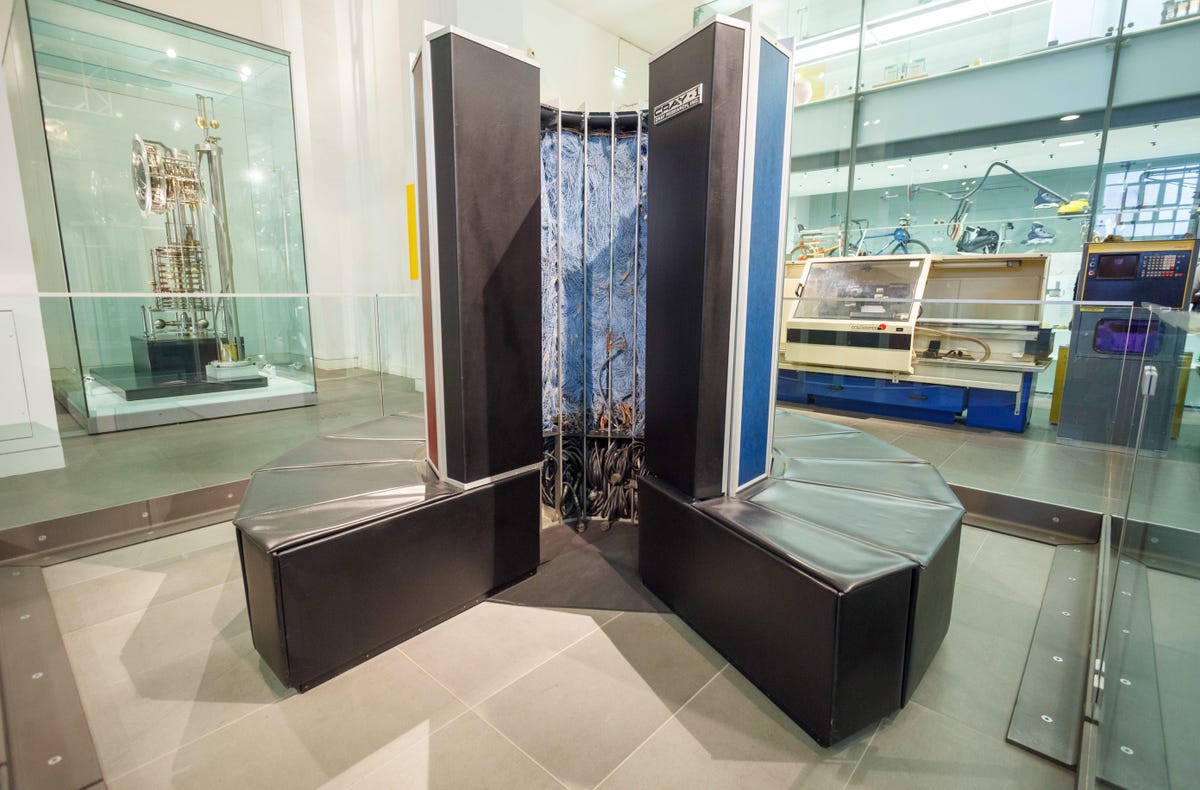
One of Seymour Cray's iconic Cray-1A supercomputers is shown at the London Science Museum. Its design is cylindrical to reduce wire lengths and features a base you can sit on.
Early computers worked sequentially, processing one number at a time, but these supercomputing Cray-1 machines increased speeds by processing calculations in an assembly line formation.
The Cray-1 sold for $10 million and used 115kW of power -- enough to power around 100 homes. The new supermachine was 10 times faster than other computers of the era.
Cray stuffed an incredible 60 miles of wire into his Cray-1 machine. Part of the reason for the machine's cylindrical design was to reduce each wire's length to just 3 inches to minimize signal delays.
A Cray-2 supercomputer from 1985 at the Musée des Arts et Métiers in Paris.
A Cray-2 488 MFLOPS/CPU with a memory of 512MW, seen here on display at the Computer History Museum in Mountain View, California. Released in 1985, each of the 27 machines made cost between $12 million and $20 million.
The Cray-2 implemented an unusual cooling system that immersed dense stacks of circuit boards in a special liquid called Flourinert, which was cooled in this tank.
A massive clump of wires that is a Cray-3 CPU section from the 1995-era Cray Computer Corporation. Only one of the Cray-3 machines was delivered before the company went bankrupt.
In 1980, "wiring ladies" working on the Cray-1 would've worn this simple smock as they spent months inside the machines under production weaving together miles of wire to form these newest supercomputers.

